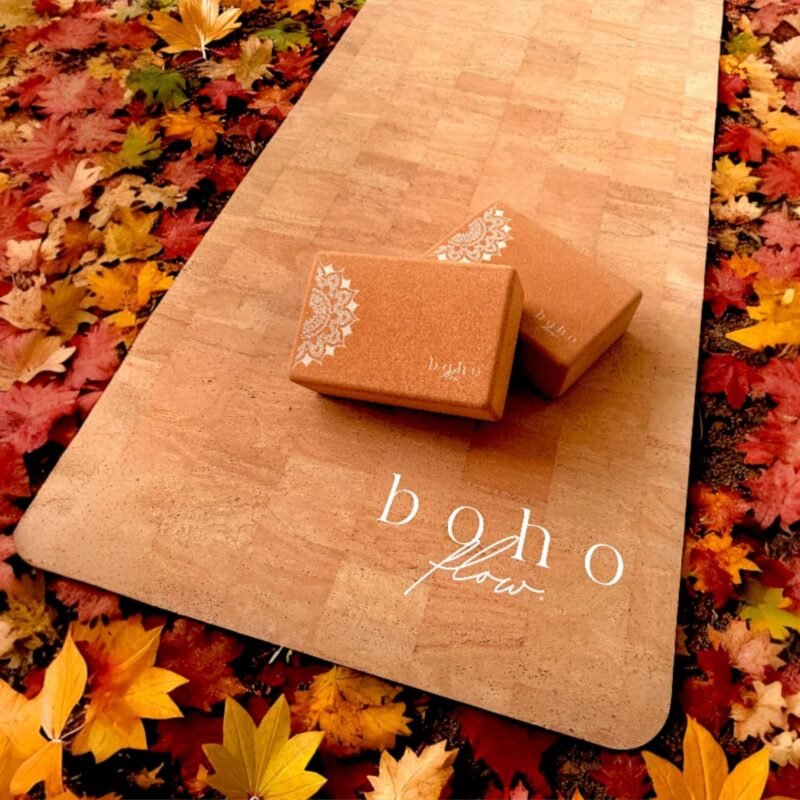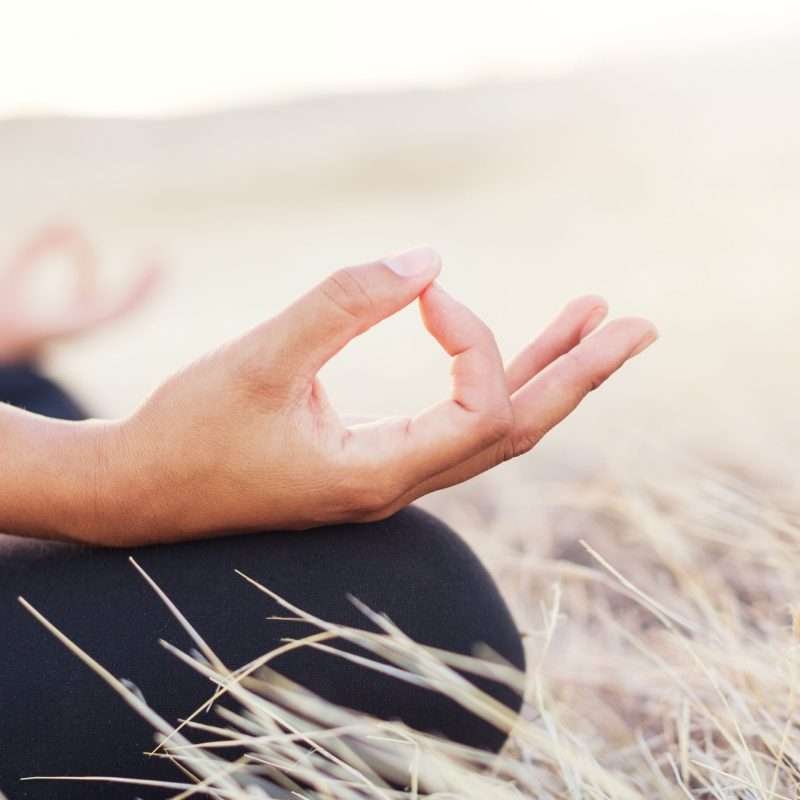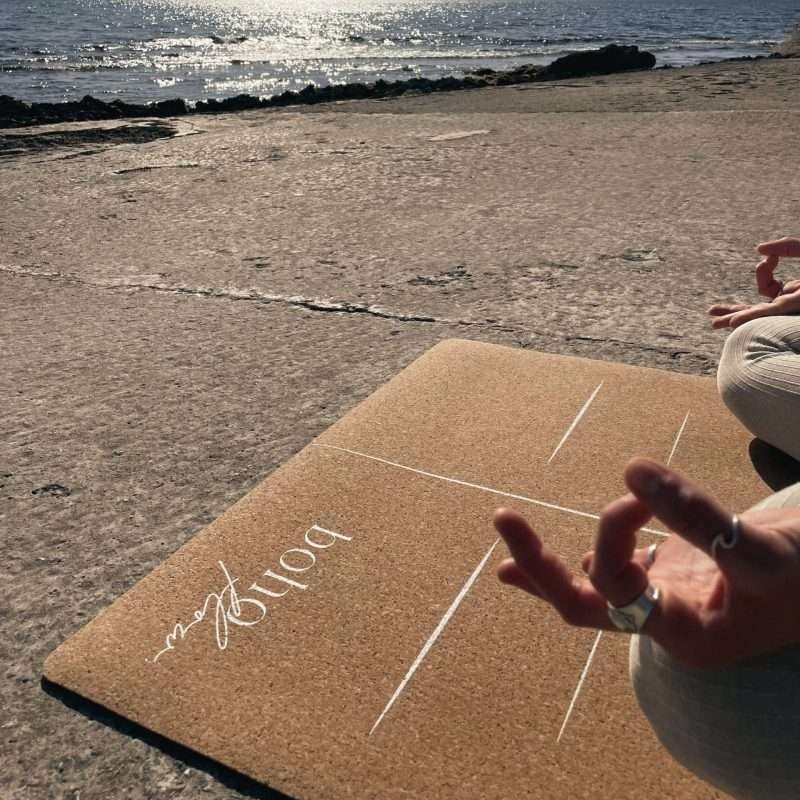Yoga for Stress Relief: Unwind With These 3 Powerful Yoga Tools
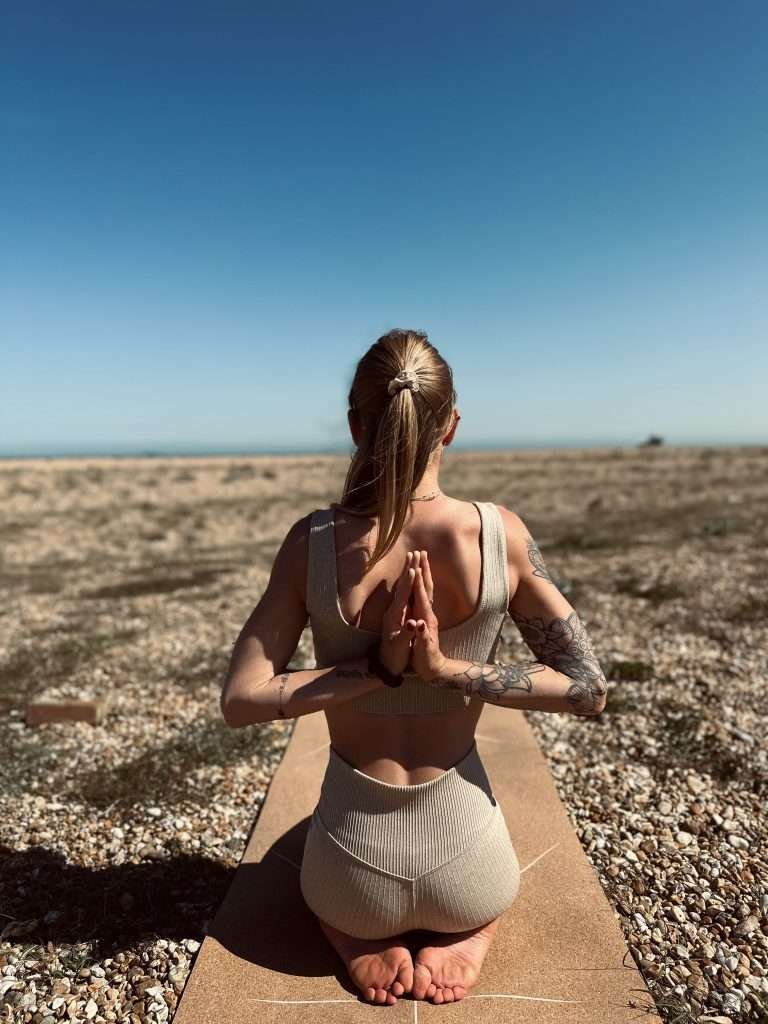
Yoga for stress relief can be your saviour from the day to day running around and to do lists – which undoubtedly cause stress that sometimes feels never-ending. However, chronic stress can actually cause inflammation in the body and contribute to physical and mental illness.
It is therefore evermore important to seek moments of stillness, active rest, and even solitude. Yoga offers a perfect and holistic way to alleviate stress, targeting various aspects of our being. By focusing on three key aspects of yoga – asana, pranayama, and mindfulness meditation – we can unlock a profound sense of calm and inner peace.
In this article, we will explore these three transformative elements and how you can utilise yoga for stress relief. We will delve into easy-to-follow practices in each category to initiate your journey towards stress relief with actionable steps that you can start implementing straight away.
Section 1: Yoga for Stress Relief Through Asana Practice
Asanas, or yoga poses, play a vital role in releasing tension from the body, promoting relaxation, and reducing stress levels. Asanas promote blood circulation, reduce stiffness in the muscles, and can generally contribute to reduced tension in the body. Certain poses activate our parasympathetic nervous system, which allows us to relax and restore.
The following five poses are very beneficial for reducing stress and activating the parasympathetic nervous system:
Reclined Bound Angle Pose (Supta Baddha Konasana):
Lie on your back with the soles of your feet together, allowing your knees to fall out to the sides. Support your back and head with pillows or bolsters. This restorative pose opens the hips and chest while promoting deep relaxation and a sense of surrender.
Happy Baby Pose (Ananda Balasana):
Lie on your back and draw your knees towards your chest. Hold the outer edges of your feet with your hands, gently pulling your knees towards the floor. This pose opens the hips and inner thighs, promoting a sense of grounding and relaxation.
Supine Spinal Twist (Supta Matsyendrasana):
Lie on your back and draw one knee towards your chest. Cross it over the opposite side of the body, extending your arm out to the side. This twist releases tension in the spine and helps to calm the nervous system.
Seated Forward Fold (Paschimottanasana):
While seated, extend your legs in front of you and fold forward from the hips. This asana stretches the entire back of the body, including the spine, hamstrings, and calves. It soothes the nervous system and relieves stress-related stiffness in the lower back and legs.
Legs-Up-the-Wall Pose (Viparita Karani):
Place your hip toward a wall, bring your legs traight up the wall and lie on your back. By elevating the legs, this pose improves blood circulation and activates the body’s relaxation response, alleviating stress and fatigue. Viparita Karani stimulates the parasympathetic nervous system and induces relaxation.
You can practice these poses as a little sequence in the order that they are listed here. Take at least eight deep breaths in each pose.
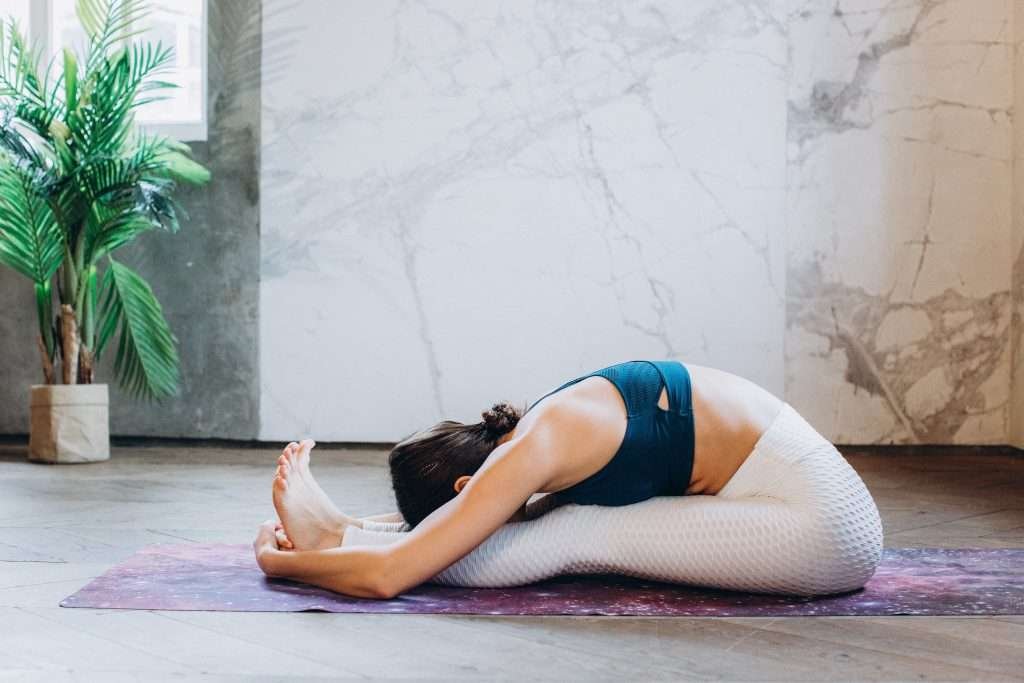
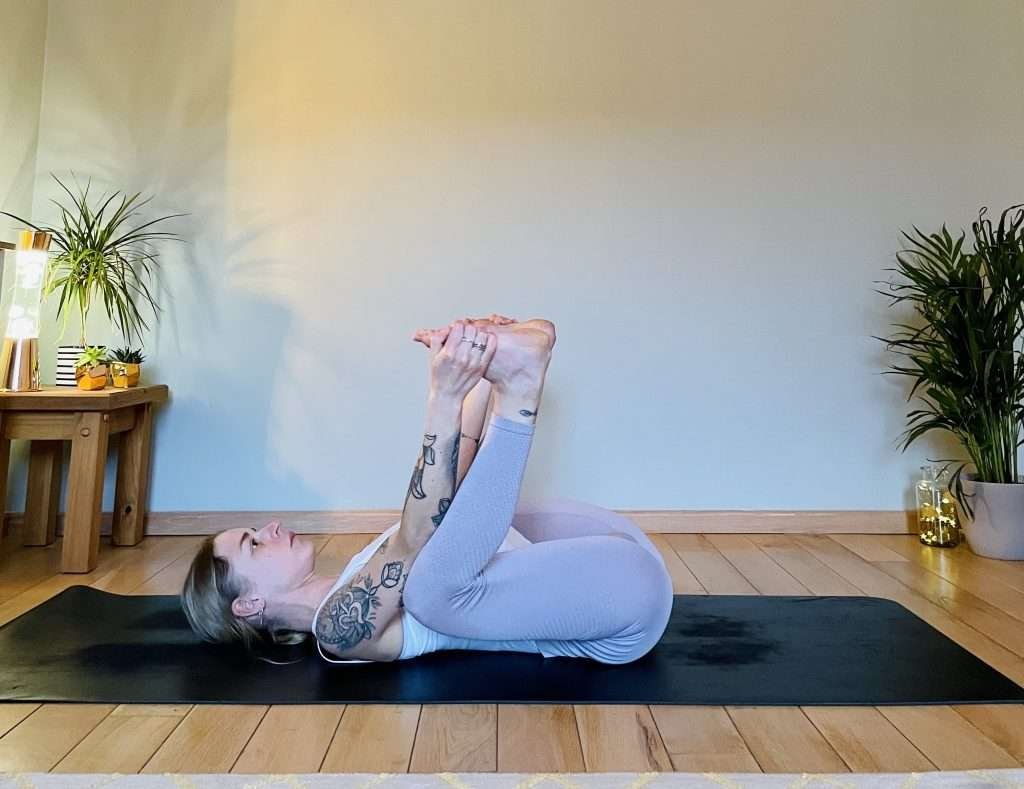
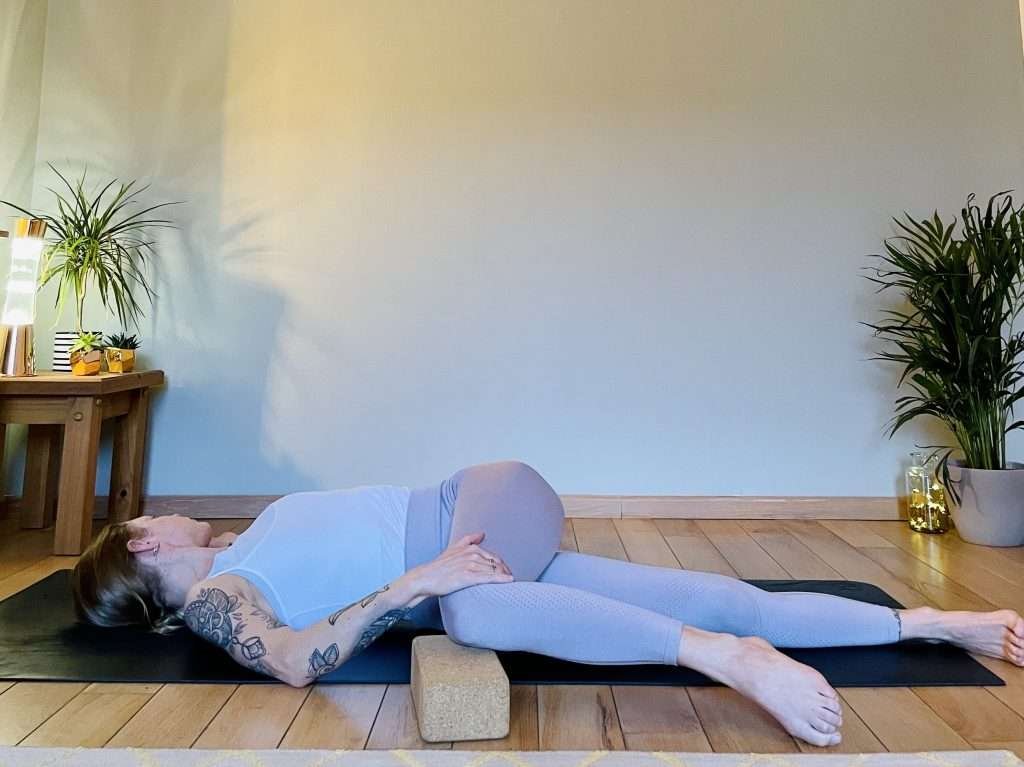
Section 2: Yoga for Stress Relief Using Pranayama
Pranayama, the art of conscious breathing or “breath control”, is a powerful tool to calm the mind and activate the parasympathetic nervous system. One of the benefits of Pranayama is also that it requires our complete attention on the breath, thereby helping to break through the monkey mind chatter.
Here are three easy-to-follow Pranayama techniques to enhance stress relief:
Deep Belly Breathing (Diaphragmatic Breathing):
Inhale deeply through the nose, allowing the belly to expand fully. Exhale slowly through the nose, feeling the belly naturally contract. This simple practice instantly calms the nervous system.
Alternate Nostril Breathing (Nadi Shodhana):
Using the thumb and ring finger, close one nostril while inhaling or exhaling through the other. The thumb closes the right, the ring finger the left nostril. Change sides with each breath. This technique balances the left and right hemispheres of the brain, promoting balance and reducing stress.
4-7-8 Breathing:
Inhale through the nose for a count of 4, hold the breath for a count of 7, and exhale slowly through the mouth for a count of 8. Repeat this cycle a few times to induce a deep sense of relaxation.
You can combine these breathing exercises with your asana practice listed above. The breathing exercises can be done before or after the practice, depending on your preference.

Section 3: Yoga and Mindfulness for Stress Relief
Mindfulness practices cultivate present-moment awareness, allowing us to detach from stress-inducing thoughts. Mindfulness is slightly different from a formal meditation practice. A formal meditation practice requires us to be seated in stillness, concentrating, with the purpose of stilling the mind and attaining higher spiritual awareness.
Mindfulness is a type of meditation and can be defined as the state of being fully present with all our senses and completely emerging ourselves into whatever task at hand. In this way, mindfulness meditation is more applicable to everyday tasks.
Research has shown that practicing meditation regularly can reduce the stress hormone, cortisol, and even re-wire the neural pathways in the brain that lead to better emotional regulation of environmental triggers.
Here are three simple and effective mindfulness practices that you can utilize daily for more inner connection and calmness:
Body Scan Meditation:
Lie down or sit comfortably, and bring your attention to each part of your body from head to toe. Notice any sensations without judgment. You can activate each muscle one by one and then consciously relax them, so that by the end, your entire body is fully relaxed.
Mindful Walking:
Take a leisurely stroll, paying attention to each step, the feeling of your feet on the ground, and the rhythm of your breath. Engage your senses in the present moment, such as the feel of the wind, any noises or smells around you.
Gratitude Practice:
Take a few moments each day to reflect on three things you are grateful for. A good time for this is right before bed. Ideally, journal down these three things in a “gratitude journal”. Focusing on the positives in life can shift your perspective and reduce stress.
Yoga offers a holistic approach to alleviate stress by addressing different aspects of our being using asana, pranayama, and mindfulness meditation. Each aspect in itself offers easy-to-follow practices in the forms of poses, breathing exercises, and mindfulness exercises that can be incorporated daily. These yoga practices help to reduce stress in the physical body as well as the mind and provide moments of refuge in otherwise overwhelming days.
We hope you enjoyed this article and found it helpful!

